Manufacturers are always under pressure to make better products for less money. Polymer processing additives provide a practical way to meet both demands.
These special additives turn ordinary raw materials into higher-quality finished products and they help control flow, prevent damage during processing, and improve the final product’s strength and performance.
What Are Polymer Processing Additives
Polymer processing additives are special chemicals used to change material properties during manufacturing. These substances improve flow characteristics, thermal stability, and final product performance.
Modern manufacturing relies on these additives to achieve consistent quality. They reduce processing temperatures, speed up production cycles, and minimize waste generation.
Additive Function | Primary Benefit | Cost Impact |
Flow Enhancement | Faster processing | 15-25% time reduction |
Thermal Stability | Reduced degradation | 20-30% waste reduction |
Mechanical Properties | Better end products | 10-15% performance gain |
Processing Aid | Smoother operations | 25-35% efficiency boost |
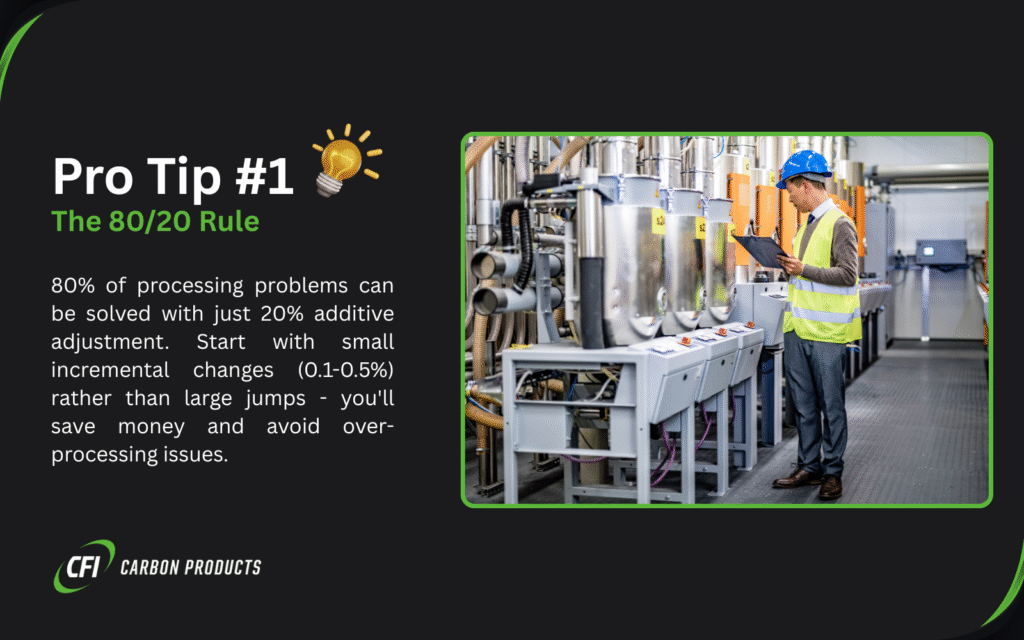
Types of Polymer Processing Additives
Different manufacturing processes require specific additive formulations. Each type addresses particular challenges in material transformation.
- Flow Modifiers
Flow modifiers reduce melt viscosity during processing. They enable lower processing temperatures and faster cycle times.
Modifier Type | Temperature Reduction | Cycle Time Impact | Application |
Internal Lubricants | 20-40°F | 15-20% faster | PVC processing |
External Lubricants | 15-30°F | 10-15% faster | Polyolefin molding |
Processing Oils | 25-35°F | 20-25% faster | Rubber compounding |
- Stabilizers
Stabilizers protect polymers from thermal and oxidative degradation. They maintain material properties throughout processing cycles.
Heat stabilizers prevent molecular breakdown at high temperatures. UV stabilizers protect finished products from sunlight damage.
- Reinforcement Additives
Reinforcement additives strengthen final products. They improve tensile strength, impact resistance, and dimensional stability.
CFI’s Austin Black 325 serves as an effective reinforcement additive. This organic filler enhances mechanical properties while reducing overall product weight.
Key Benefits in Manufacturing
Polymer processing additives deliver measurable improvements across production metrics. These benefits translate directly to profitability.
Benefit Category | Typical Improvement | ROI Timeline |
Production Speed | 20-35% faster cycles | 3-6 months |
Quality Consistency | 40-60% defect reduction | 2-4 months |
Energy Consumption | 15-25% lower usage | 6-12 months |
Material Usage | 10-20% waste reduction | 4-8 months |
- Cost Reduction
Manufacturing facilities report significant cost savings through strategic additive use. Lower processing temperatures reduce energy consumption.
Faster cycle times increase throughput without additional equipment investment. Reduced waste generation cuts material costs.
- Quality Enhancement
Additives eliminate common processing defects. They prevent surface imperfections, dimensional variations, and premature degradation.
Consistent quality reduces customer complaints and warranty claims. Higher quality products command premium pricing.
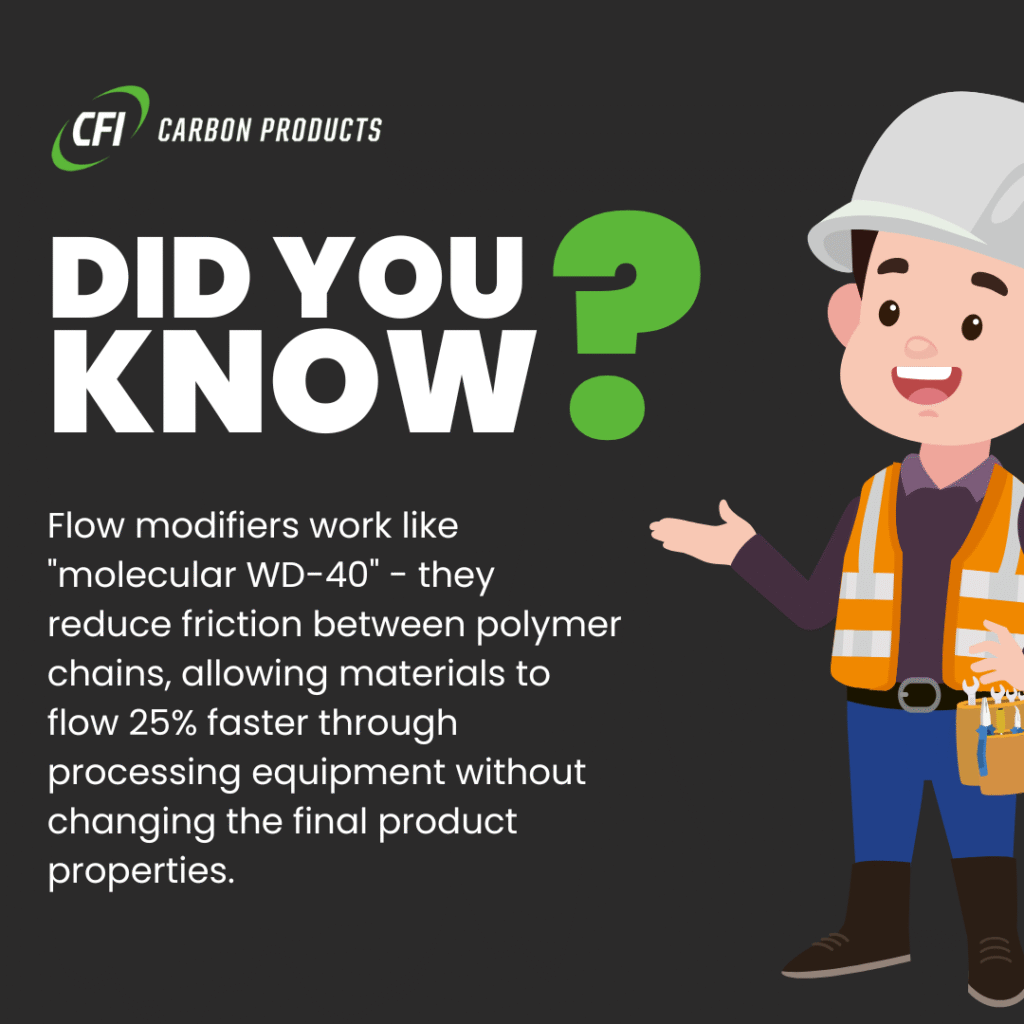
Industrial Applications
Polymer processing additives serve diverse manufacturing sectors. Each industry has specific requirements and performance standards.
- Plastics Industry Applications
The plastics industry relies heavily on processing additives for injection molding, extrusion, and blow molding operations.
Process Type | Common Additives | Performance Gain |
Injection Molding | Flow enhancers, stabilizers | 25-30% cycle reduction |
Extrusion | Processing aids, lubricants | 20-25% speed increase |
Blow Molding | Thermal stabilizers | 15-20% defect reduction |
PVC additives play a crucial role in rigid and flexible PVC applications. They improve processing characteristics and final product properties.
- Rubber Industry Applications
The rubber industry uses specialized rubber additives for tire manufacturing, industrial components, and consumer products.
Processing aids reduce compound viscosity during mixing. They improve filler dispersion and reduce processing energy requirements.
- Coatings Industry Applications
The coatings industry incorporates specialty additives to control rheological properties and application characteristics.
Rheological additive formulations control flow and leveling properties. They prevent sagging on vertical surfaces while maintaining good brush application.
Selection Criteria for Optimal Performance
Choosing the right polymer processing additives requires careful consideration of multiple factors. Wrong selections lead to processing problems and quality issues.
Selection Factor | Impact Level | Key Considerations |
Polymer Type | Critical | Chemical compatibility required |
Processing Temperature | High | Thermal stability limits |
End-Use Requirements | High | Performance property needs |
Regulatory Compliance | Critical | Food contact, medical use |
- Compatibility Assessment
Chemical compatibility between additives and base polymers determines processing success. Incompatible combinations cause phase separation and performance failures.
Laboratory testing confirms compatibility before full-scale production. Small batch trials identify potential issues early.
- Performance Requirements
End-use applications dictate additive selection criteria. Automotive applications require different properties than packaging applications.
Industrial additives for harsh environments need superior thermal and chemical resistance. Consumer products prioritize safety and regulatory compliance.
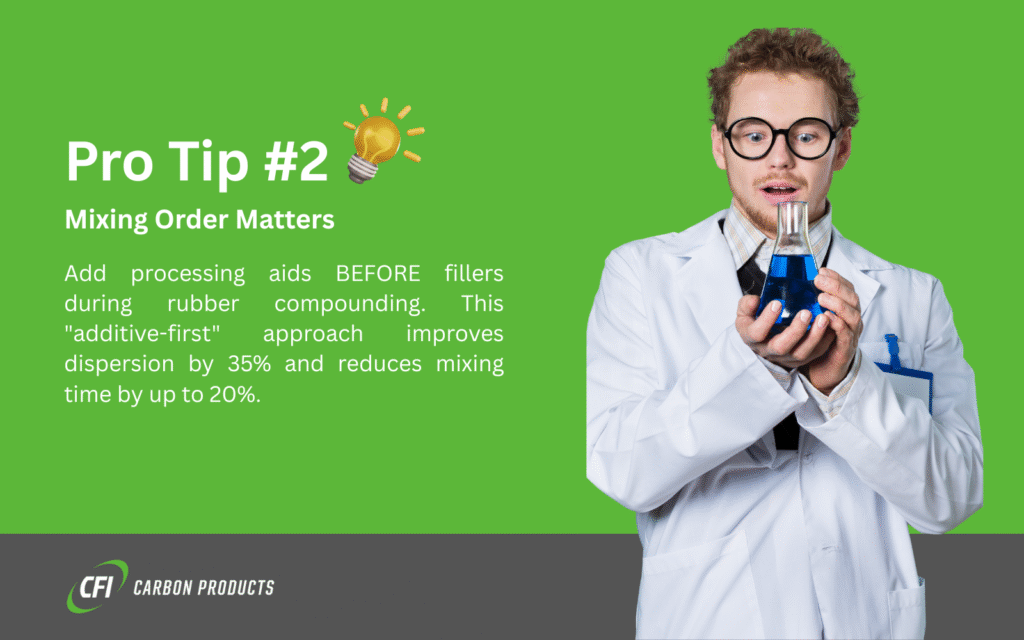
Processing Techniques and Best Practices
Proper incorporation methods maximize additive effectiveness. Poor mixing techniques waste additive investment and create quality problems.
- Mixing Methods
Different mixing approaches suit various production scales and polymer types.
Mixing Method | Scale | Advantages | Limitations |
Dry Blending | Small to medium | Simple, cost-effective | Limited dispersion |
Melt Blending | Medium to large | Excellent dispersion | Higher energy cost |
Solution Mixing | Laboratory to small | Precise control | Solvent requirements |
- Temperature Control
Processing temperatures affect additive performance and polymer stability. Too high temperatures cause degradation. Too low temperatures prevent proper mixing.
Optimal temperature ranges vary by polymer type and additive selection. Continuous monitoring prevents processing problems.
- Quality Control Measures
Regular testing confirms additive effectiveness throughout production runs. Key parameters include melt flow rates, thermal properties, and mechanical performance.
Statistical process control identifies trends before quality problems occur. Quick adjustments maintain consistent product quality.
Sustainability and Environmental Impact
Modern manufacturing prioritizes environmental responsibility. Polymer processing additives contribute to sustainability goals through multiple mechanisms.
Sustainability Benefit | Environmental Impact | Quantified Improvement |
Energy Reduction | Lower carbon footprint | 15-25% energy savings |
Waste Minimization | Reduced landfill impact | 20-30% waste reduction |
Extended Product Life | Resource conservation | 25-40% longer service |
- Low-Emission Solutions
CFI Carbon Products specializes in low-emission production processes. Austin Black 325 demonstrates how sustainable manufacturing creates competitive advantages.
Reduced processing temperatures lower energy consumption and emissions. Efficient production cycles minimize environmental impact while maintaining quality standards.
- Recyclability Enhancement
Certain additives improve polymer recyclability. They maintain properties through multiple processing cycles.
Enhanced recyclability supports circular economy principles. Manufacturers reduce virgin material consumption while meeting performance requirements.
Cost-Benefit Analysis
Investment in quality polymer processing additives generates measurable returns. Proper economic analysis guides optimal selection decisions.
- Initial Investment vs. Long-term Savings
Higher-quality additives cost more upfront but deliver superior long-term value. They reduce total production costs through improved efficiency.
Cost Factor | Short-term Impact | Long-term Benefit |
Additive Price | Higher initial cost | Lower cost per unit |
Processing Efficiency | Immediate gains | Sustained improvement |
Quality Consistency | Reduced rejects | Lower warranty costs |
- ROI Calculation Methods
Return on investment calculations must include all cost factors. Direct material costs represent only part of the economic equation.
Labor savings, energy reductions, and quality improvements contribute to total return. Comprehensive analysis reveals true additive value.
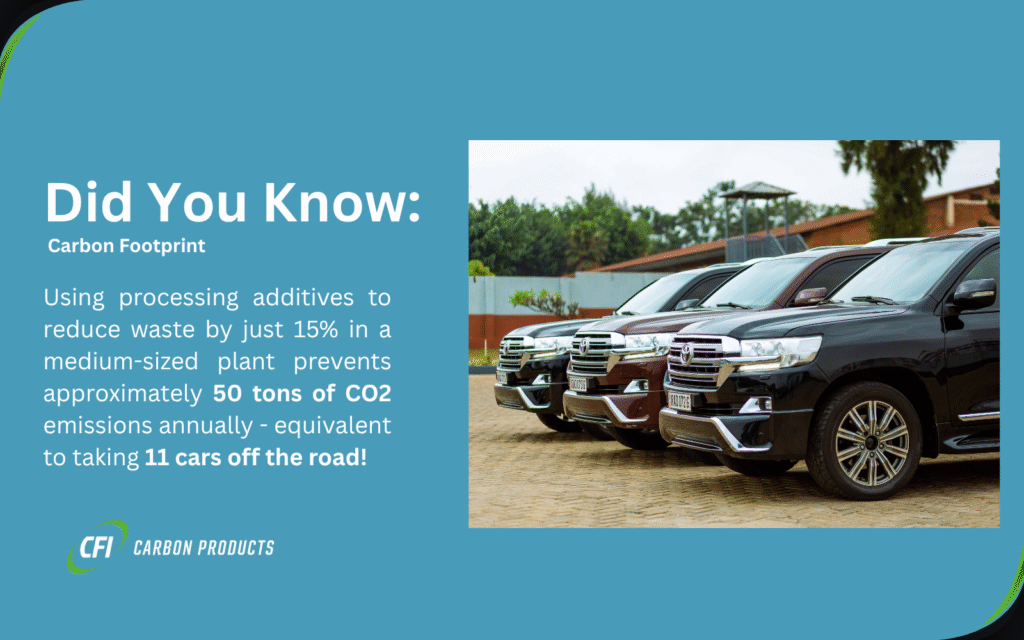
Future Trends and Innovations
Polymer processing additive technology continues advancing. New developments address emerging market needs and regulatory requirements.
- Smart Additives
Next-generation additives respond to processing conditions automatically. They optimize performance in real-time without operator intervention.
Temperature-sensitive formulations adjust properties as conditions change. Pressure-responsive additives modify flow characteristics dynamically.
- Bio-Based Solutions
Renewable additives reduce environmental impact while maintaining performance standards. Plant-based alternatives replace petroleum-derived compounds.
These innovations support sustainability goals without compromising product quality. Market acceptance grows as performance matches traditional additives.
The polyurethane additives segment shows particular innovation potential. New formulations address foam processing challenges while meeting environmental standards.
Technical Specifications and Standards
Industry standards define performance requirements for polymer processing additives. Compliance ensures product quality and regulatory acceptance.
Standard Type | Organization | Scope | Application |
ASTM Standards | ASTM International | Test methods | Quality control |
ISO Standards | ISO | International harmonization | Global trade |
FDA Regulations | US FDA | Food contact | Packaging applications |
- Testing Protocols
Standardized testing confirms additive performance and safety. Common tests include thermal stability, migration resistance, and mechanical properties.
Regular testing during production maintains quality consistency. Batch-to-batch variation stays within acceptable limits.
- Certification Requirements
Certain applications require formal certification. Medical devices, food packaging, and automotive components have specific standards.
CFI Carbon Products maintains comprehensive quality systems. These systems support customer certification requirements across multiple industries.
Troubleshooting Common Processing Issues
Even with proper additive selection, processing problems can occur. Quick identification and correction minimize production disruptions.
Problem | Likely Cause | Recommended Solution |
Poor Flow | Insufficient processing aid | Increase additive level |
Surface Defects | Contamination or degradation | Check thermal stability |
Color Changes | Thermal degradation | Reduce processing temperature |
Mechanical Weakness | Poor dispersion | Improve mixing procedures |
- Problem Prevention
Proactive measures prevent most processing issues. Regular equipment maintenance and material testing identify problems early.
Operator training reduces human error. Standard operating procedures maintain consistency across shifts and operators.
- Emergency Response
When problems occur, rapid response minimizes impact. Pre-established troubleshooting protocols guide corrective actions.
Material suppliers provide technical support for complex issues. Their expertise accelerates problem resolution and prevents recurrence.
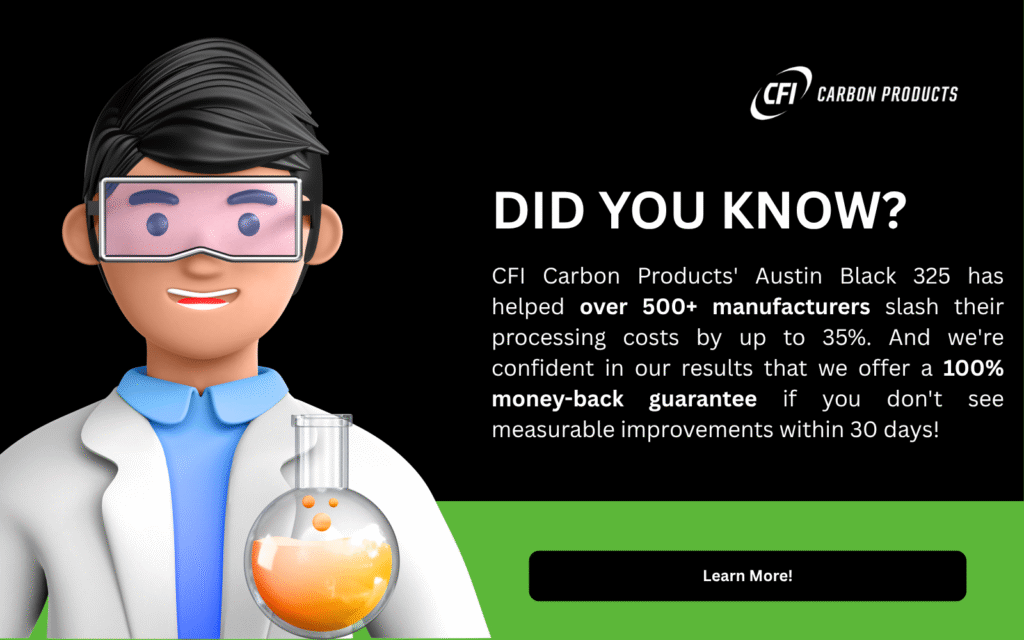
How Polymer Processing Additives Improve Your Manufacturing Operations
Polymer processing additives transform manufacturing operations through improved efficiency and product quality. Strategic selection based on specific application requirements maximizes benefits.
CFI Carbon Products offers solutions for diverse manufacturing needs. Austin Black 325 demonstrates how sustainable production methods create competitive advantages.
Success depends on proper additive selection, optimal processing conditions, and continuous quality monitoring. Investment in quality additives generates measurable returns through reduced costs and improved products.
Modern manufacturing cannot achieve optimal performance without polymer processing additives. These specialized compounds bridge the gap between raw materials and high-performance finished products.Contact CFI Carbon Products today to discuss how our additive solutions can improve your manufacturing efficiency and product quality. Our technical team provides expert guidance for your specific application requirements.

